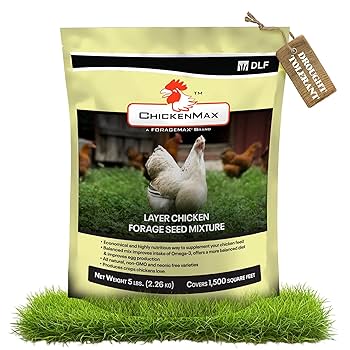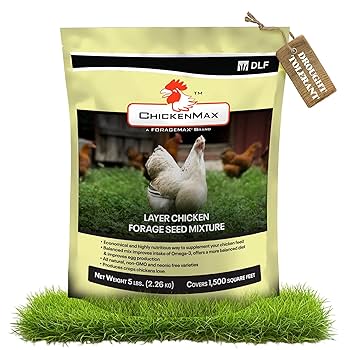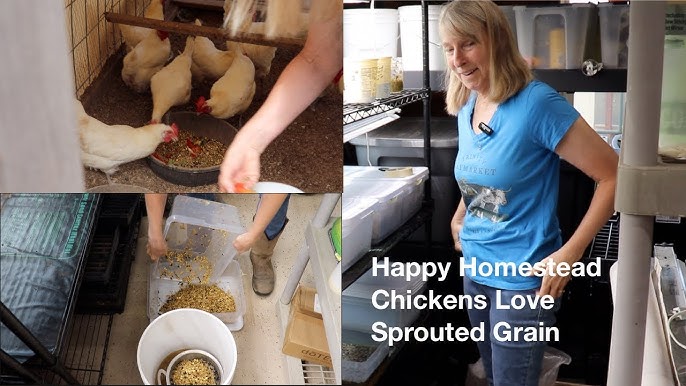
Weathering the Feed Shortage: A Homesteader's Guide to Keeping Chickens Healthy
Homesteaders across the nation are facing an unprecedented challenge: a widespread shortage of chicken feed. Driven by factors like droughts impacting soy crops, transportation bottlenecks, and increased global demand, this shortage is hitting small-scale farmers hard. This isn't just about inconvenience; it's about the health and well-being of your flock, your family's food security, and the resilience of our communities. This article dives into the causes of the shortage, its consequences, and, most importantly, provides actionable strategies to navigate this crisis and keep your chickens thriving.

Understanding the Chicken Feed Crisis
The current chicken feed shortage is primarily impacting soy-based feeds, a cornerstone of most poultry diets. Reduced yields due to drought in key growing regions, coupled with supply chain disruptions, have created a perfect storm. Even if you can find feed, expect significantly higher prices. This impacts not only your wallet but also the viability of raising chickens for eggs and meat. Regionally, the impact varies; the Southwest and areas reliant on long-haul trucking are experiencing the most acute shortages. We'll explore what's driving up prices and making it hard to find feed. Rising fuel costs are also contributing to the problem, making transportation more expensive and less reliable. Global events, such as increased demand from developing nations, further exacerbate the situation. It's a multifaceted issue that requires resourceful solutions.
Immediate Action: Alternative Feed Sources
Don't panic! Several alternative feed sources can supplement or replace traditional chicken feed.
- Black Oil Sunflower Seeds (BOSS): A readily available, high-fat option that can make up a significant portion of their diet, especially in cooler months. Purchase these in bulk from farm supply stores, or even use the seed heads from your own sunflowers. Add about 1/4 cup per bird per day. BOSS are a great source of energy and can help maintain healthy feathers.
- Sprouted Grains: Sprouting grains like wheat or barley increases their nutritional value. Soak grains for 24 hours, then rinse and drain twice daily until sprouts appear (2-3 days). Offer as a supplement. Sprouting unlocks enzymes and increases vitamin content, making the grains more digestible for your chickens.
- Foraged Greens and Bugs: Let your chickens free-range (if safe from predators) to forage for insects and greens. Supplement with kitchen scraps (vegetable peels, fruit cores, bread crusts). Avoid feeding processed foods, avocado pits/skins, and anything moldy. Supervise free-ranging to prevent them from accessing potentially harmful plants.
- Dried Mealworms/Black Soldier Fly Larvae: Provide a high-protein boost, especially important for laying hens. You can purchase these online or even raise your own. These are an excellent source of protein and can help maintain egg production during a feed shortage.

Long-Term Solutions: Building Community Resilience
The feed shortage underscores the importance of community resilience. We need to start thinking longer term.
- Form a Feed Co-op: Partner with other homesteaders to buy feed in bulk at discounted prices. Share transportation costs and storage responsibilities. Pooling resources strengthens everyone's ability to weather shortages.
- Support Local Grain Farmers: Source grains directly from local farmers, cutting out the middleman and supporting your community. Look for farmers growing alternative feed crops like field peas or oats. Building relationships with local farmers creates a more sustainable food system.
- Grow Your Own Feed: Consider planting crops specifically for chicken feed, such as sunflowers, kale, or fodder beets. This reduces your dependence on external feed sources. Plan your garden to include chicken-friendly crops to ensure a steady supply.
- Share Resources and Knowledge: Participate in local homesteading groups to exchange information and resources. Collective wisdom can help everyone find innovative solutions. Attend workshops, join online forums, and connect with experienced homesteaders.
Flock Management During a Shortage
Adapt your flock management practices to conserve feed. Efficient flock management is key to conserving precious resources.
- Reduce Flock Size: If necessary, reduce your flock size to match your available feed. Fewer birds mean less feed consumption. Carefully evaluate your flock and consider rehoming some birds if needed.
- Cull Non-Layers: Identify and cull hens that are no longer laying consistently. Non-producing hens consume feed without contributing to egg production. This can be a difficult decision, but it's a practical one during a shortage.
- Supplement with Grit and Calcium: Ensure your chickens have access to grit (small stones) to aid digestion and calcium (crushed oyster shells) for strong eggshells. Proper digestion helps them utilize available feed more efficiently. Provide these supplements free-choice in separate containers.
- Monitor Weight and Health: Regularly check your chickens' weight and overall health. Address any issues promptly to prevent further complications. Early detection of health problems can prevent further feed waste and potential losses.
Conclusion
The chicken feed shortage is a serious challenge, but homesteaders are resilient. By understanding the causes, implementing alternative feeding strategies, and building community connections, we can weather this storm and continue to provide for ourselves and our families. This is a time to innovate, collaborate, and strengthen our commitment to sustainable living. Let's use this as an opportunity to learn, adapt, and build a more resilient food system for the future.